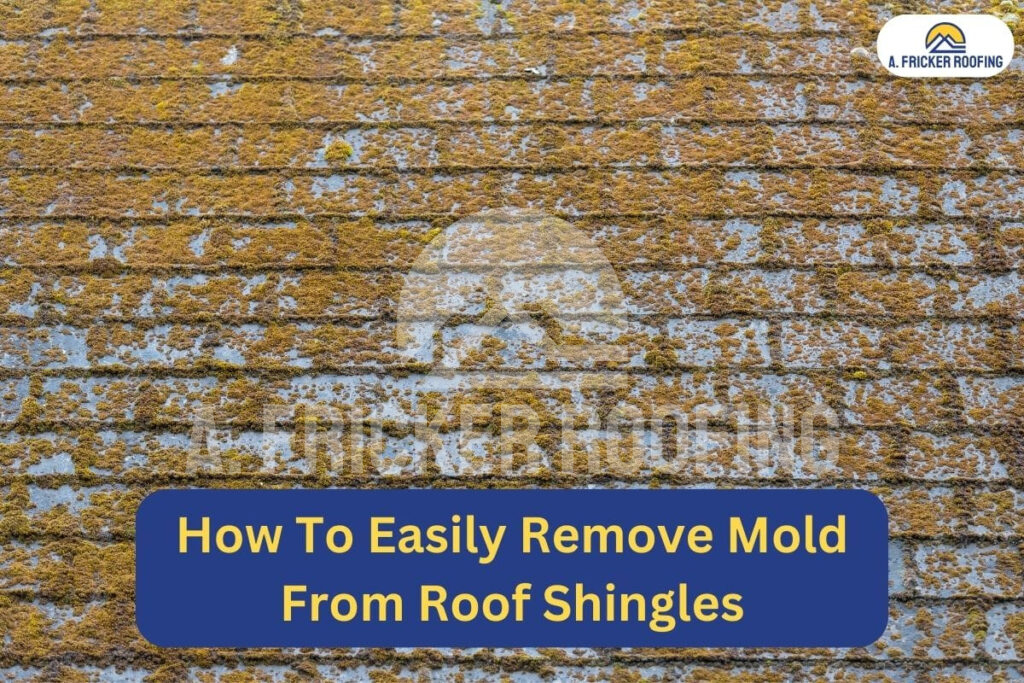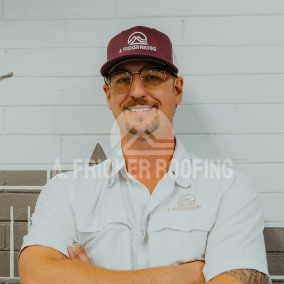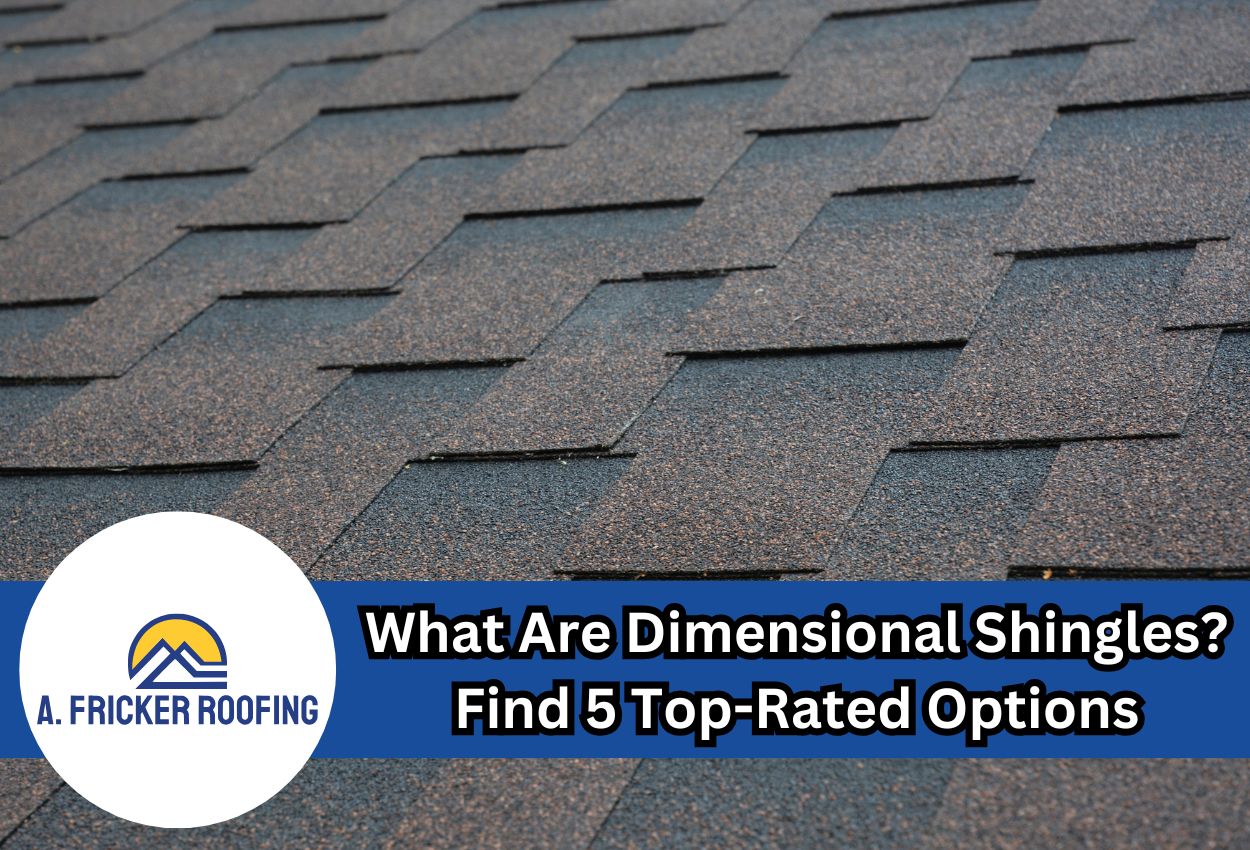Removing mold from your shingle roof may seem like a daunting job to homeowners, however using the right techniques and products can make it a simple and easy task.
If you don’t want to see mold or the left behind stains on your roof, this blog post is for you. In this guide, we will talk about removal techniques and the products, both homemade and commercial, so you can get rid of mold, mildew, and discoloration once and for all.
Understanding the Impact of Mold on Roof Shingles
Mold growth on roof shingles is a common problem, especially in areas with high humidity or frequent rainfall. The presence of mold not only diminishes the visual appeal of your home but can also compromise the structural integrity of the roof over time. Additionally, mold can contribute to respiratory issues for individuals in the affected home.
Types of Mold on Roof Shingles
Before diving into the removal process, it’s essential to identify the type of mold present on your roof shingles. Different molds require different approaches to treatment. Common types of mold found on roofs include Cladosporium, Aspergillus, and Stachybotrys or black mold. Knowing the specific type will help you choose the most effective removal method.
Homemade Solutions For Mold Removal From Shingles
Bleach is a potent and widely used solution for removing mold from roof shingles. When preparing a bleach solution for mold removal, it’s crucial to follow the right proportions to ensure its effectiveness and your safety.
How To Prepare:
- For most mold removal applications, a general guideline is to mix one cup of bleach with one gallon of water. This creates a solution with approximately a 1:10 bleach to water ratio. However, for larger or more stubborn mold infestations, you can increase the bleach concentration slightly.
- Carefully measure the bleach and water using the measuring cup. Pour the bleach into a clean container, followed by the appropriate amount of water. Don’t mix bleach directly with other cleaning products, as this can result in harmful chemical reactions.
- You can also add a small amount of dish soap to the bleach solution. This helps the solution adhere to the surface and improves its overall effectiveness. Use a mild, non-ammonia soap to avoid creating toxic fumes when mixed with bleach.
- Now, you can stir the bleach, water, and dish soap mixture thoroughly. Ensure that the bleach is evenly distributed in the solution.
Commercial Mold Removal Solutions
If you prefer to purchase a cleaner over mixing one yourself, here are a few options:
1. Spray & Forget Revolutionary Roof Cleaner Concentrate

Revolutionary Roof Cleaner Concentrate from Spray & Forget is a cleaning solution that is designed to remove stains caused by algae, mold, and mildew from roofs. It is a super concentrated formula that, when mixed with water, begins to work in just a few minutes. One gallon of this concentrate can make enough cleaning solution for over 1,000-square feet of application. The product is bleach and phosphate-free, making it safe for use on asphalt, wood, slate, and clay shingles.
The Revolutionary Roof Cleaner Concentrate is also easy to use. Simply mix it with water and apply it to the roof using a sprayer or a similar device. The product is also environmentally friendly, making it a great choice for those who are looking for a sustainable cleaning solution.
2. Wash Safe™ ROOF WASH
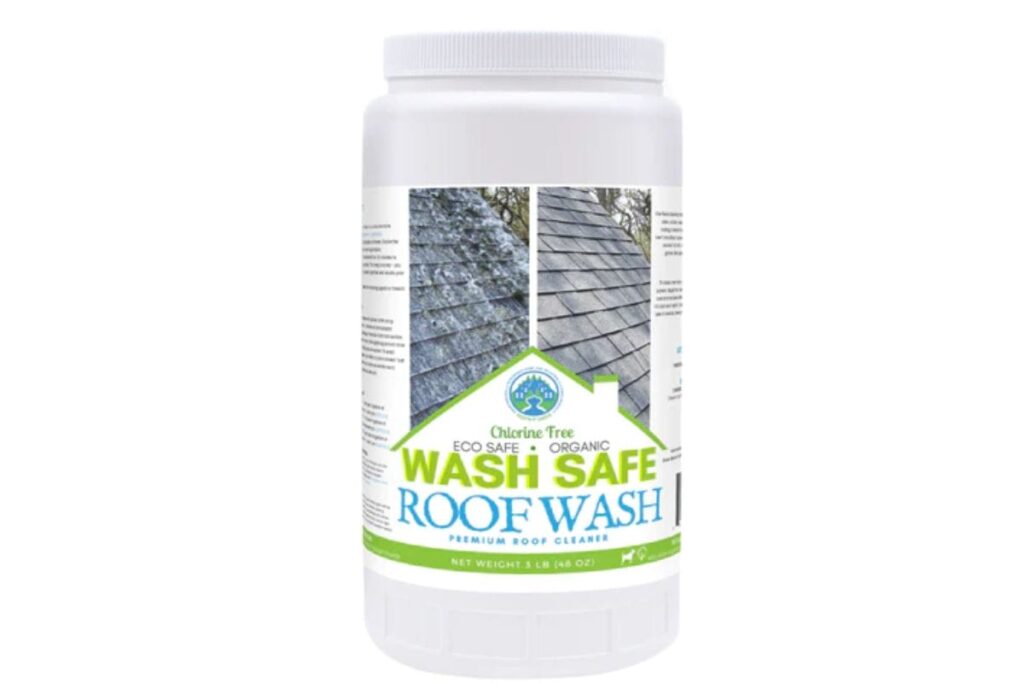
Wash Safe ROOF WASH is an eco-safe and organic roof cleaner that is also bleach-free. It is ideal for cleaning asphalt, metal, wood, slate, and ceramic shingles or tiles. The product is oxygen-based and has an active life of 4-6 hours before it biodegrades, making it one of the safest products available.
The product is highly effective in removing stains on your roof from mold, fungus, and moss without the use of harsh chemicals. It delivers transformative results and can be used by homeowners and roofing contractors alike.
3. Zinsser® JOMAX® Roof Cleaner & Mildew Stain Remover
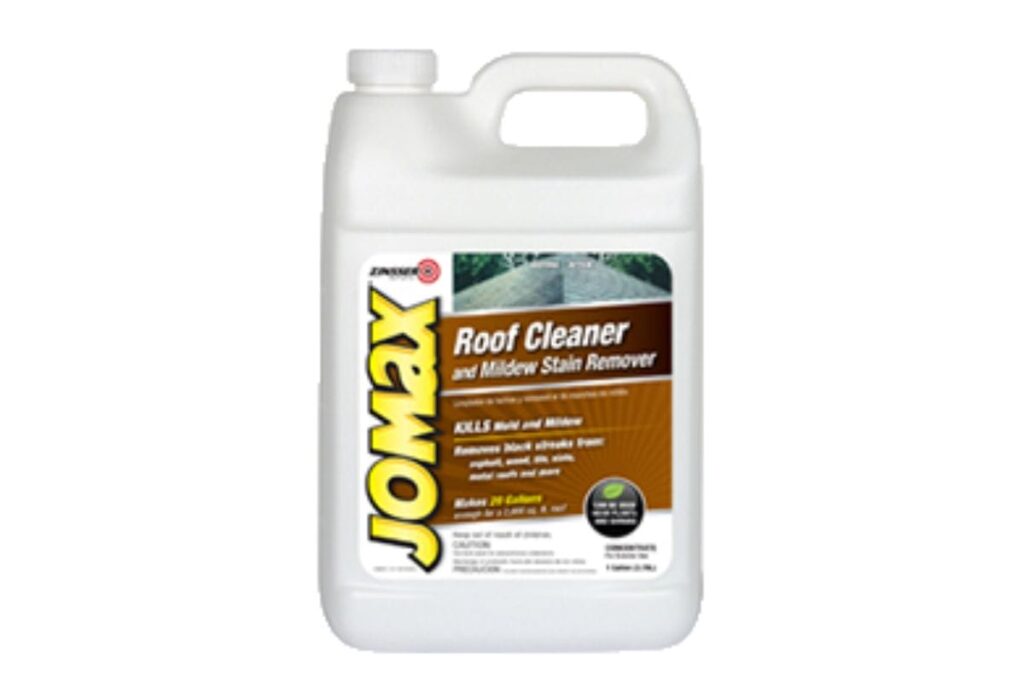
Zinsser JOMAX Roof Cleaner & Mildew Stain Remover is a DIY-friendly mold and mildew stain remover for various types of roofs, including asphalt shingles. To use, simply mix the solution with bleach and water, apply it to the roof, and rinse. One gallon of the concentrate makes around 20 gallons of cleaner, or enough for around 2,000-square feet. This product works quickly, removing mold and mildew on hard, non-porous surfaces in a single treatment.
How to Clean Mold Off the Shingles
Follow the steps given below to safely remove mold from roof shingles.
1. Prioritize Safety
Before you start cleaning mold off your roof shingles, prioritize safety. Gather the necessary protective gear, including:
- Gloves: Protect your hands from cleaning solutions and potential debris.
- Safety Goggles: Shield your eyes from potential splashes of the cleaning solution.
- Mask: Wear a mask to avoid inhaling mold spores.
2. Locate the Affected Area
Thoroughly inspect your roof to identify areas affected by mold. Look for dark spots, discoloration, or any signs of fungal growth. Note the extent of the mold to plan your cleaning strategy effectively.
3. Remove Debris Off the Roof
Before applying any cleaning solution, remove debris from the roof, such as leaves, twigs, and loose dirt. Use a soft-bristle broom or a leaf blower to clear the surface. This ensures that the cleaning solution can directly target the mold.
4. Get Your Cleaning Solution Ready
Mix a cleaning solution by following the manufacturer’s instructions.
- Choose any mold removing solution in the right concentration.
- Use cold or room temperature water.
5. Apply the Cleaning Solution
Using a soft-bristle brush or a low pressure sprayer, apply the cleaning solution to the mold affected areas. Gently scrub the shingles, ensuring thorough coverage. Take care not to use a high pressure washer, as it can damage the shingles.
6. Let the Solution Sit
Allow the cleaning solution to sit on the roof for the recommended time according to the manufacturer’s instructions. This gives it time to kill the mold and break down any remaining stains.
7. Rinse the Roof Thoroughly
Rinse the roof thoroughly with water using a garden hose. Ensure that all traces of the cleaning solution are washed away. Pay attention to surrounding vegetation, and if necessary, cover plants with plastic sheeting before cleaning.
When You May Need A Roof Replacement
If you are noticing the following signs, you may need to replace your roof.
1. Repeated Mold Growth
If mold on roof shingles is occurring continuously despite regular cleaning and preventive measures, it could be a sign of underlying problems. Persistent mold growth may indicate hidden moisture issues or inadequate ventilation, making a roof replacement a needed solution to address the root cause.
2. Widespread Mold Infestation
If the mold infestation on your roof is widespread and covers a large portion of the shingles, cleaning alone may not be sufficient. In cases where the mold has extensively spread across the roof surface, a replacement may be the most practical and effective solution to prevent further damage.
Get Your Roof Inspected By Professional Roofers In Tulsa, OK
If you notice the widespread growth of mold on your roof, it’s essential to take action to address the problem before more extensive damage is done. If the mold growth is continuous despite your effort to remove it from your roof, it’s time to call professional roofers in Tulsa, OK for a roof inspection.
Contact A. Fricker Roofing and Waterproofing in Tulsa, OK, for your professional roof inspection. Call us today at (918) 402-7167!
